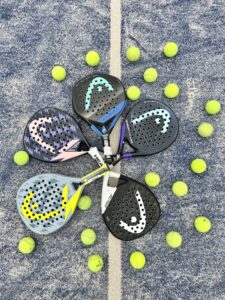Why Adequate Drainage is Key to Padel Court Specs and Maintenance
3 min read
Why Adequate Drainage is Key to Padel Court Specs and Maintenance
Welcome, fellow padel enthusiasts! Today, we are going to dive into the exciting world of padel court specs and maintenance. Padel, with its blend of tennis and squash, has taken the sporting world by storm, captivating players of all ages and skill levels. We all know that a well-maintained padel court is crucial for an enjoyable game, but have you ever stopped to think about the importance of adequate drainage? If not, buckle up, because we’re about to embark on a wet and wild adventure into the world of drainage in relation to padel court specs!
What exactly is adequate drainage, you ask?
Well, my padel-loving friends, adequate drainage refers to the ability of a padel court to efficiently handle water runoff. Picture this: you’re all suited up, gripping your padel racket, ready to conquer the court. But as soon as you step onto the playing surface, you find yourself slipping and sliding like a penguin on an ice rink. Not the ideal scenario, right? That’s why adequate drainage is of paramount importance.
Why is drainage important for padel court specs?
Let me break it down for you in simple terms. Without proper drainage, your beloved padel court can transform from a haven of exhilarating rallies to a treacherous puddle-filled nightmare. Excessive water buildup can lead to slippery surfaces, damaging the integrity of the game and increasing the risk of injuries. No one wants their match to turn into a synchronized swimming routine, right? So, it’s crucial to ensure your padel court has efficient drainage systems in place.
But what are the consequences of improper drainage?
Ah, I’m glad you asked, my dear readers. Improper drainage can wreak havoc on your padel court, causing a plethora of issues. First and foremost, stagnant water can seep into the court’s surface, resulting in cracks and deterioration. This not only affects the playability of the court but also significantly shortens its lifespan. Furthermore, areas with poor drainage can become breeding grounds for pesky moss, algae, and other unwelcome organisms, turning your padel court into an unsightly mess.
So, how can you ensure adequate drainage in your padel court?
It’s time to get down to business, folks. When constructing or maintaining a padel court, there are several key factors to consider to guarantee excellent drainage. Firstly, a proper slope or gradient should be incorporated into the court design. This allows water to flow freely towards drainage points, preventing any unwelcome pooling. Additionally, the use of high-quality porous materials, such as artificial grass, can aid in water absorption and filtration. Installing efficient drainage systems, such as perforated pipes, will further enhance the court’s ability to handle excess water.
Don’t neglect the maintenance!
Remember, my fellow padel aficionados, adequate drainage is not a one-time affair. Regular maintenance is vital to keep your padel court in top-notch condition. Clear any debris or obstruction from the court’s drainage points to ensure smooth water flow. If you notice any signs of inadequate drainage, such as standing water or slow runoff, take immediate action to rectify the issue. Prevention is always better than cure!
Final thoughts
And there you have it, my friends! Adequate drainage is the unsung hero of padel court specs and maintenance. By ensuring your padel court has excellent drainage systems in place, you’re not only prolonging its lifespan but also elevating the overall playing experience. Say goodbye to slippery surfaces and hello to adrenaline-pumping rallies! So, next time you step onto the court, spare a moment to appreciate the importance of proper drainage. Your fellow players will thank you!







